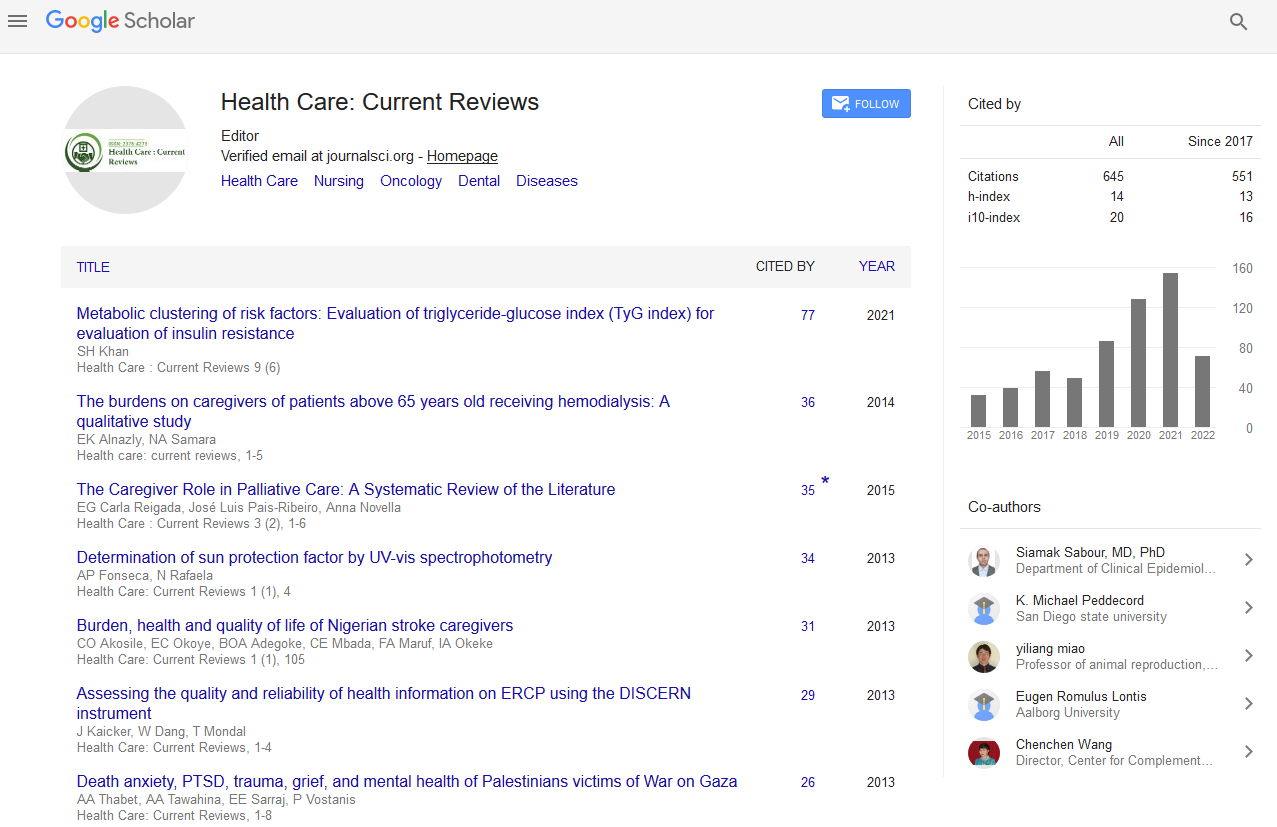PMC/PubMed Indexed Articles
Indexed In
- Open J Gate
- Academic Keys
- RefSeek
- Hamdard University
- EBSCO A-Z
- Publons
- Geneva Foundation for Medical Education and Research
- Google Scholar
Useful Links
Share This Page
Journal Flyer

Open Access Journals
- Agri and Aquaculture
- Biochemistry
- Bioinformatics & Systems Biology
- Business & Management
- Chemistry
- Clinical Sciences
- Engineering
- Food & Nutrition
- General Science
- Genetics & Molecular Biology
- Immunology & Microbiology
- Medical Sciences
- Neuroscience & Psychology
- Nursing & Health Care
- Pharmaceutical Sciences
An audit of screening for depression among asthmatic, hypertensive and ischemic heart diseases patients at primary healthcare setting in Dubai, UAE, 2015
2nd Annual Congress and Medicare Expo on Primary Care & General Pediatrics
September 19-20, 2016 Phoenix, USA
Hamid Yahiya Hussain, Al Lauz H, Al Suwaidi S and Al Faisal W
Dubai Health Authority, Dubai
Posters & Accepted Abstracts: Health Care: Current Reviews
Abstract:
Background: Doctors of primary healthcare should always been trained to screen for depression among their asthmatic, hypertensive and cardio-vascular patients. The mild to moderate cases of depression can be screened, diagnosed and managed at the primary care level unless it is severe with suicidal ideation or resistant to treatment after 12 months of follow up, in that case it has to be referred to the hospital. Objectives: To study the proportion of asthmatic, hypertensive and ischemic heart patients who are screened for depression; to study the percentage of those who are suspected to have depression according to PHQ 9 tool out of those who are screened and; to identify actions taken when suspecting a case of depression among asthmatic hypertensive and ischemic heart disease (IHD) patients. Methods: The audit was conducted in primary healthcare setting. A cross-sectional design was utilized. Asthmatic, hypertensive & IHD patients aged 18 years and above, visiting PHC HCs from September to end of November 2015 were the population of this audit. Asthmatic, hypertensive or ischemic heart diseases patients already on treatment for depression, and cardiovascular diseases other than hypertension or IHD were excluded. Five health centers were randomly chosen, and a sample size of 412 was chosen from those centers. A comprehensive sampling technique was utilized (all patients attending those clinics during data collection period). PHQ 9 was used to screen for depression. Doctor part was to complete (questions related to depression screening: 8-21) the questionnaire. Results: The study revealed socio-demographic distribution of study sample, e.g., As age group 50-59 and 60+ were the highest groups 29.6% and 30.8 respectively, female were more than male 57.5%, UAE nationality were about 77.2% comparing with expatriates, 85.8% of the study population were married, about 32.0% of the sample were having higher education, and 54.1% were having no work. The study showed that 86.4% of the samples were having hypertension compared to 8.7% asthma and 3.2% IHD, the study revealed that about 6.6% of sample who screened for depression were diagnosed as depression. 2.4% of depression cases were mild depression and similar were moderate. The study revealed that about 40.5% of assigned health care provider was committed to carry out screening for depression among NCD patients at primary health care facilities settings while almost 60% were not. Conclusion: An operational gap while applying screening of depression among NCD patient at primary healthcare facilities by health care providers has been significantly figured out, lack of training, lack of awareness and weaknesses of auditing culture were among the main reasons behind. Training of health care providers, creating a culture of auditing at institutional and individual level and empowering adherence to standards, guidelines will be the effective strategies to increase percentage of conducting screening for depression among asthmatic, hypertensive and ischemic heart patients, and subsequently increase the percentage of those who will receive treatment and improve their treatment outcomes.
Biography :
Email: hussainh569@outlook.com


